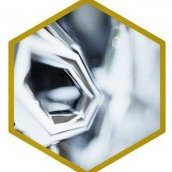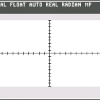Search the Community
Showing results for tags 'performance'.
-
Hi how does affinity photo perform while editing raw files using a 2017 Imac I5 8GB Memory Imac? I head photoshop and lightroom is very slow, I just wondered if anybody used affinity with this spec mac? Darren
- 2 replies
-
- imac
- performance
-
(and 1 more)
Tagged with:
-
For some reason, the AFD interface is scaling to beige where it should be scaling to white. This doesn't affect any final renders, but while it substitutes white for beige in the interface, I can't make any accurate design judgements involving colour. So this is happening on my new computer. I booted up my old computer with Designer and it doesn't have the same issue. Whites are white. I open up the same files on my new computer and whites are now beige (see attachment). Note in the toolbar where fill and stroke should be a red line in a white box, its a red line in a beige box. I tried changing the renderer from my GPU (nvidia) to WARP but this has had no effect. I am running Windows 7 on both computers and I have attached my Nvidia information file for more details. I have not noticed this problem in any other applications running on my system. It is not a monitor calibration issue. I have no idea what colour profiles I should be selecting in preferences. I have attached a screenshot of my colour settings. NVIDIA System Information 01-05-2017 09-51-49.txt
-
I have Affinity for windows, and I'm really impressed. My old laptop struggles to run affinity though, Looking at reasonable priced new latops (low end) it seems NONE of them can manage a 1920x1080 screen resolution - and I don't use it often enough to justify spending a lot. But I notice that I can get an iPad Air 2 for less than a laptop, and I think I'd use that more too. Editing photos is a big part of what I want to do, so my question is: Is an iPad Air 2 good enough to run Afinity pro withot it being awkwardly sluggish? And that applies to photo editing, and panorama stitching, (which I suspect is considerably more demanding)
- 8 replies
-
- ipad
- performance
-
(and 2 more)
Tagged with:
-
this example is from the latest AD beta but is the same for AP when you click "preferences" (having the hand tool selected), the dialog does not open until you "release" the "click" therefore it takes longer to "klick" the dialog than to hit "cmd + ;" in constrast: the adjustments layer dialog (the circle down in the layers panel) pops up immediately upon the "key press down" which makes it feel more snappy can this be enabled for other popups/ dialog/ persona switching/ switching tools as well? cheers PS this may be related https://forum.affinity.serif.com/index.php?/topic/44673-toggle-off-layers-lag/#comment-222876
-
Pen latency has been on my mind since the new Surface Pro and iPad Pro were announced. I enjoy drawing in Affinity Designer with the brush tool, and I really like some of the fancier brushes, but the appearance of new lines always lags behind my drawing pretty drastically. When using elaborate brushes, would it be practical for Affinity Designer to draw a plain, unstyled line under the stylus immediately and then draw the fancy brush version over it?
-
From the first day AP was released for Windows (even the beta) I was desperately trying to make AP work for me .... I wanted AP to be the THE (first real) alternative for PS (considering I couldn't find enough swear words for Adobe and their cloud policy). I was accepting and reporting all bugs you obviously had to expect from a sw that complex. I was trying to make the product better as quick as possible by generating test cases, videos to show bugs and even offering Serif my support in development and localisation. And seeing the sw that had great features, good customer support, a big crowd of (active) fans and users - what could go wrong to make AP the new PS in a long term? As you can see I'd do everything to make this baby mine. One can hardly approach a product more positively than I did with AP ... After all that time I see myself closing PS6 tonight working on a customer project and I'm asking myself: why do I still not(!) use AP? AP actually hast most (>95%) of the functions I frequently use in my daily work as a photographer. Even the plugins work in AP. Some functions are even more powerful than in PS6. Still I don't even think of AP when it comes to productive work for customers. And it's not because I'm used to PS ... not because it's a habit - there are very real reasons for it. Some of them I often mentioned before but serif keeps ignoring them up to the stage of not even bother to make any kind of comment. So I though I'd open this topic and bring my issues (again) to the attention of serif staff and other users ... maybe I'm not the only one. To find some good examples for my problems I decided to take a current project that requires stacking (where I feel AP is a lot easier with than PS). 7 RAW pictures that require alignment and focus stacking to adapt different areas of the picture. And what I'm describing now is not an exception ... things I describe are not necessarily reproduceable ... but it does not happen with ANY OTHER PROGRAM I use on my machine (just for those who already start blaming the state of my system as a scapegoat!). And whenever I start AP known and new things like that happen. I'm using lots of memory and disk space ... a still reasonably quick graphics card and processor on Win 7! After taking some time for reading the 7 big RAW files, aligning them and doing the focus stacking I get the processed picture. As well as a source list including all of my stacked single pics and the resulting pic. I add a levels filter and a curve filter to the file. Already after adding the curve filter the histogram is not displayed any more. I know this bug. It has been reported quite a while ago by me (and maybe other people) - apparently wasn't looked after. This does not always happen ... and is not clearly reproduceable, but since levels and curve setting are pretty useless unless you can see the histogram (except for those who do not know what they are doing) it is a bit of a bummer. Certainly knowing that it can only be solved by saving the picture and restarting AP. So I skipped this step and clicked on the first single stacked picture in the displayed list. First of all not even the focus did change to the newly selected picture I clicked on. 5 Seconds later AP completely disappeared and Lightroom was the active application (first I thought AP did crash, but it did not ... it just completely lost it's focus) ... so by clicking the task list I could get it back ... the behaviour interestingly was reproduceable. Now going to the develop persona and coming back to the photo persona the "source list" was reduced to one file called "untitled". Where did all the 8 files disappear to? OK, better don't ask. Now I want to compare the newly stacked picture with another similar picture I took. So I decide to undock the current window. Really a bad idea ... the new window does not resize but moves somewhere mostly outside the current working area. (Just as ONE example: when I do this in PS the new window resize to the layer size and displays with a certain distance at the top left corner of the workspace. PS comes with ready made presets for windows alignment. PS allowns a window to adapt to the picture size all the time. With AP it takes me ages to adjust this new window to the working area I'd like to have. And believe me I really tried hard to get it working or to adapt to this ridiculous user-hostile attitude - no chance. For those who did not get it yet: There is a good reason why the PS Window Menu has more than 25 additional commands for window adjustments - it's not because they had nothing else to do!) But many other things really set me up .... it's this lack of responsiveness of the UI (sometimes) ... you sometimes can drag sliders and they will not move ... or maybe with significant delay (seconds later). Sudden changes of focussed windows for reasons I don't understand (so you have to click in the window again you want to work in). Trying to confirm an action e.g. in a Windows UI manner (pressing Enter if you want to confirm a setting) and nothing will happen. Lacking "OK" and "Cancel" buttons so dialogs will remain open unless you find this tiny cross at the top. Settings I can't save (standard values in dialogs), paths AP will not remember (saving a picture where I loaded the original from). The export persona tries successfully to hide my user setting for standardised output format (bi-cubic,sRGB, JPG) as the last(!) entry in an extensive long list of useless "Standard" setting ... and it makes me search my standard setting for EACH picture I do export ... it seems to me like Serif is challenging my stamina and endurance in so many ways. I could go on and on on theses topics... my conclusion and answer to the question "why there's still no love" would be the following: Serif build an high performance Aston Martin Sports car ... but when you want to open the door you break your finger nails, the steering wheel is covered with nettles and the safety belt will come loose while driving. The gas pump nozzle is mounted in the middle of the roof, the bonnet occasionally opens while driving and it takes 15 switches 3 hooks and an armoured metal plate to get to the opener for the boot as well as many other obstructions. In a race against the Adobe Maserati it can easily keep up, is quicker in some curves sometimes even drives offroad ... But what car do you like to drive and will you choose to drive to work? Sadly Serif does not realise, understand nor care for these essentials at all! They can't stop celebrating AP won races (now on an iPad) ... and seem to forget that there a people around need to use the car on a daily base ... I'm not waiting for Affinity Publisher ... I'm waiting for AP to get a daily working horse! Cheers, Timo All descriptions refer to the latest final Version 1.5.2.69
- 25 replies
-
- Performance
- Workflow
-
(and 3 more)
Tagged with:
-
Hi, I have recently purchased Affinity Photo and have been quite happy with what I can achieve with it. I'm a photographer and I normally go through the workflow of Iridient X-Transformer --> Lightroom --> Affinity Photo on my PC. Affinity Photo is only used for stacking and tone mapping purposes using TIF files generated by Lightroom. More and more I am finding myself going through the same performance pain points where I am basically sitting there for minutes waiting for Affinity Photo to do something (which I will get into below). Last night I downloaded the trial version of Affinity Photo on my Macbook Pro and did a few tests. Turns out Affinity Photo consistently performs up to 3 times faster on the MBP using the same set of files. I am hoping someone with more experience here can give me some advice on how I could improve the performance of Affinity Photo on PC. Below are the specs for my PC and MBP: PC Intel i7-4790K OC'd @ 4.40 Ghz (with a large Noctua air cooler) 16GB DDR3 RAM @ 2400 MHz with XMP profile 1 enabled (G.Skill Trident-X 8Gx2 F3-2400C10D-16GTX) Nvidia 1080 GPU (a Gigabyte OC model) Macbook Pro (Mid 2015, 15'') Intel i7 @ 2.5 Ghz 16GB DDR3 @ 1600 MHz AMD Radeon R9 M370X + Intel Iris Pro 1536 MB As you can see the PC's spec is significantly higher than the macbook's. It is winter here at the moment (<0C outside) and the system is well ventilated (has no problem in 144hz gaming) so there is no thermal limitation. The photos that I edit generally sit on a NAS. The PC is connected to the NAS via ethernet and the MBP via wireless AC. I have uploaded a sample of 4 RAF files generated by a Fujifilm X-T2 onto Dropbox. Here's the link. To test the performance. I always repeated the following steps and timed each one on each machine: Create a new stack in Affinity Photo using the 4 RAF files Set Live Stack Group blending to minimum Rasterize the Live Stack Group Tone map the pixel layer Here are some observations I made from the tests: Affinity Photo loads up faster on the MBP than the PC. Creating a Live Stack Group is consistently quicker on the MBP. Live Stack group blend mode live preview is a lot faster on the MBP than the PC. Live Stack group rasterizing is significantly faster on the MBP than the PC (10sec vs minutes) PC tone mapping consistently takes 00:50 ~ 1:30 to process. MBP tone mapping consistently takes 00:20 ~ 00:22 to process. CPU heavy tasks will utilise 100% of the CPU on the MBP but only 60~80% on the PC in some cases. There is no CPU throttling on the PC at all (winter + large cooler) GPU utilisation never goes above 1% on the PC. There is very little disk/network bandwidth utilitsation during any of these tasks. All of the above are true regardless of which renderer I use on PC and whether I have hyper-threading enabled or not. Having the RAF files on SSD's instead of the NAS made no differences either. I have tried the latest 1.6 beta and it made no differences in performance on PC using the same steps above. I don't understand why a PC with much better hardware is being out performed by a Macbook by 3 times as much and generally have a much smoother experience... I am getting to the point where I am seriously considering using the MBP as a photo editing machine but that would mean some significant investment into repurchasing software licenses and some new hardware so I could actually dock the MBP to my PC monitors and input peripherals and I would rather not have to do that. Any help is much appreciated! EDIT: more info on the spec's and additional notes on the observations.
- 2 replies
-
- performance
- mac
-
(and 3 more)
Tagged with:
-
Hopefully someone from Affinity can answer this one: It seems that the Geekbench scores are confirming that the hardware internals of the new iPads are identical, except for the battery and screen resolutions (the 12.9 having larger batteries due to the larger display). Knowing this, will the 10.5 iPad handle more live filters and adjustment layers to be applied on a project, because of its lower screen resolution? If so, does that make the 10.5 the better choice if the main concern is squeezing performance from these tablets? I'm looking for an objective, evidence based answer: Can the 10.5" handle more adjustment layers and overall processing than the 12.9 due to the lower resolution? Thanks!
- 12 replies
-
- iPad
- performance
-
(and 3 more)
Tagged with:
-
Hi there, I guess I start to sound like a broken record. Well, although I love Affinity, I have to call your attention to this crucial topic once again. I'm working in a new place and I decided to install the trial on a blaze fast machine. Here are the specs: Dual Intel® Xeon® CPU E5-2650 v4 @ 2.20GHz, 2201 Mhz, 12 Core(s), (RAM) 64.0 GB Dual NVIDIA TITAN X Samsung SSD 850 EVO 500GB Windows 10 Pro On this box I'm running Cinema 4D 18 with Octane, Adobe After Effects CC 2017 (and all the CC suite), plus other 3D programs (for 3d Tracking, also Blender 3d and so on) and it's a nice and smooth experience. Unfortunately, coming to Affinity Photo, I was sadly surprised to notice the same issues I've at home (where I use both the final and the latest beta). As soon as the work gets deeper with multiple layers, masks, adjustments, Affinity Photo becomes slow, even with random moments where it freezes, up to the point it randomly crashes. At first, I was excited to have the trial on this box as I hoped to show off Affinity to my colleagues (and maybe convince them to give it a try and buy it). But now I feel I won't proceed in that direction. The type of work we do requires fast turnarounds, sometimes we have very tight deadlines or new requests comes out of nowhere and need to be done by yesterday. Photo will remain my little gem at home where I can take advantage of a different pace. But I seriously hope you will realize how important is to give priority to this two crucial weakness. I know you are working to improve it, and you are working hard. Just wanted to share my experience and hope that Photo will be fast and, for the most part, as bug-free as possible soon. Probably for many users in this forum, this is not an issue, at least that's the feeling from my other threads in the past. It's either because they don't have the same issues on the Mac, or because most the users here don't make heavy use of layers, large documents, and so on. I believe that if Serif is serious about pushing its products, they need to aim to a more intense usage of Photo and Designer and listen to the users here who are trying to implement Affinity in their VFX, Motion Graphics workflow. Best, Andrew
-
Hi, i would like to know witch settings are the best : OpenGL only, Open GL and Integrated GPU or Integrated GPU only? What are the differences? 'Cause, i'm having some performance issues with objects that have thousands of nodes. Thx. Ben
- 2 replies
-
- GPU
- performance
-
(and 1 more)
Tagged with:
-
Hi all! So, in my bid to help the community of Affinity, I'd like to make some videos address certain issues. It's not a perfect product, but there's no shame in trying to help make it perfect :) I've noticed that with AMD Graphic cards, Affinity will produce some considerable lag spikes during heavy duty work. This was noted on two different workstations out of three. The third housing less ram & processing power in the other, but virtually no issues. But when I changed the Renderer to WARP, (i.e, removed the GPU acceleration), the results were improved. So this is one performance tip I have (i'm sure others have discovered this but hey! It's still help, right?) Are there any other performance tips or problems that you've rectified on your end that you'd like to share? Please note that it has to be performance related. Would like to involve you.
-
- performance
- enhancement
-
(and 1 more)
Tagged with:
-
Hi all! I'm writing this 'cause I have a couple of issues using the Insproy G10T tablet with Affinity Designer, and I'm not sure where the issue lies.This tablet works just 20% of time in Affinity Designer. Sometimes it works well for the first couple of minutes, and then just starts to lag. Now, the issue here seems to be very specific: if you click something to select it, it takes a couple of long seconds to do so, unless you lift the pen all the way. Let me explain: if you lift the pen from the surface so that it still tracks the pointer, it doesn’t select/perform the action quickly at all. If you lift the pen so that the pointer is not tracked anymore, it selects it instantly. This seems to be true across multiple actions: resizing, dragging, scaling… I don’t know if this is a problem on the Affinity side or rather something Huion should solve. In fact, I wrote a mail to Huion as well. I just know two things: - the tablet works fine in other programs (Adobe Xd and Pixelmator tested): seems to indicate that the issue is on Affinity side - other tablets (like Wacom ones) work just fine in Affinity Designer: seems to indicate that the issue is on Huion side. I really wish someone could fix this or help me some way. Here is a video that may help to clear things up: https://goo.gl/photos/xwGx8t4dUu1hCfRi8 Thank You in advice, Philip Müller
-
I am experiencing a lot of lag in both Designer and Photo. My main machine is running Windows 10 on an i7 3770K, 16GB of RAM and an AMD 390X OC with 8GB VRAM. When comparing things like rotate, curve adjustment, scaling, perspective filter, etc. with Photoshop or Illustrator, I noticed a huge CPU spike on affinity to 100% together with some lagging fragments (squares in the selection that arent updated yet to the new configuration) while photoshop and illustrator could pull it off with smoother framerates as well as less CPU usage. It's like my 390X isn't used a lot in Affinity. This is really breaks my workflow when I am working with multiple layers or bigger documents and I can't work precise anymore. I wonder if I am the only one that notices this? Is there something wrong with my pc build or software configuration or is this just how Affinity is supposed to be working?
- 18 replies
-
- Multi
- Performance
- (and 4 more)
-
//EDIT: formerly known as 'the big disappointment'// -------------------------------------------------------------------------------------------------------------------------------------- dont know if i am in the right place for my complaints, admins just might feel free to change the category. ust tried the designer/photo-combo. although theres actually no trial available, the current offer made me weak. so bought both and the book, installed and ... just got quite disappointed! having a approved win7pro 64bit-system with two calibrated nec spectraview reference monitors, calibrated epson 3880 printer and soft-rip for cmyk proofing. this setup is reliable, well maintained and flawlessly working with adobe illustrator, photoshop, indesign and lightroom as well as corel draw for dtp and photo editing same as web development. every application is giving consistent results under the given color management enviroment. thus said before describing the affinity-experiences to indicate this might be not a newbies issue ... so to af designer and photo: first serious issue i am encountering is a quite incorrect color presentation when using cymk-incorpotated files. colors here are far to vibrant and quite "over the top". looks like viewing a rgb-pic under wrong conditions as wide-gammut with no correction. profiles set throughout all applications are eciRGB or srgb/adobe rgb respective iso coated/uncoated v2. as long as in rgb, affinity follows the other applications - completely going nuts in cymk. every application does this great too, exept for the affinitys. theres 'flashing' colors that neighter represent the correct appearance nor theire useable in any way. as the color management setup showed absolutely no problems so far, i assume the problem is up to affinity. having hardware calibrated monitors with 16bit lut, and experiencing affinity isnt able to handle existing 16bit cymk tifs too, there might be something that affinity cant handle regarding the monitor-assigned profiles? btw: when i am applying a srgb-emulation to one of the monitors (as i am doing when developing for web) the colors in affinity are getting better for cymk... but that cant be the solution, as this is not useable for all other applications which can handle the monitor profiles the right way. switching my monitor profiles to native srgb as suggested in some other threads, changes nothing at all. apart from that it cant be managed that way through windows due to hardware-calibration. so what does affinity wrong? affinity is praysed for being used by professionals, but how would they, experiencing such issues?? maybe its me whos doing something wrong with affinity, but why does it work well with all other programs??? any hint for maybe overlooked things highly appreciated. theres some other things too, i've experienced already within the first few hours: - no support for 16bit cymk tif-files (big downpoint, as there are many) - no color control/preview when exporting bitmaps /.png/.jpg (which is quite sad too when theres no consistent color-conversion as it seems) - no recognition of postscript-printer (soft-rip) and available deactivation of printer profile (because colors are handled by rip - adobe does this as well as corel...) - no option for printing without profile overall - quite important for printing calibration targets for profiling (as well as targeting the rip) ... - no color inspection tool without clicking (like info-panel in adobe, or maybe havent just found yet) - using exported corel-files as .ai does not work in affinity, have to save them in ai again. great clincher as well. - the dark ui has far to harsh contrasts, especially within menus - startup-time is worse 30-40 sec plus on a real fast engine (plenty of ram plus ssd - adobe and corel only takes a fraction of it) - ...? having just made simple setup and some research, maybe ill find other issues, maybe experiencing some change to the better, but so far there isnt much hope i am able to replace my print workflow with affinity at all. if this problems (at least the color-thing) wont be solved soon, theres no way using affinity for (my) cymk-workflow. and if this persists until the upcoming publisher is revealed, it will be unuseable for this too! really would be glad being able to dismiss adobe and corel (the sooner the better), but obviously theres completely no way for that up till now ... so at the moment regarding the buy as kind of support for affinity and ongoing development to the better... and: hoping for production-useable versions within version 1. sad. and just as a remark: its quite a pity one cant order designer, photo and book within one single subscription - maybe i am too dumb for, but it required three individual oders to get all of them... and - it may be some good idea for the future to offer bundles (once they work correctly of course!).
- 25 replies
-
- color management
- performance
- (and 4 more)
-
I'm curious as to how each of the items affects the applications' performance. There's no explanation in the help files. RAM Usage Limit: I notice this can be dragged up to ~64 GB (which is more than 5 times how much RAM my Mac has...); does lessening the amount keep the application running smoothly... or do I need to open it up to the maximum amt of RAM I have so that it doesn't get "bottled up"? Disk Usage Warning Limit: This one's a bit confusing--does the application warn you if there's less than the set amount when you try to save a document? Again, the max is set at 64GB, even though my hard drive has 40 GB of free space at the moment. Undo Limit: I presume that the lower I set this, the less RAM the application will need Dither gradients: faster performance checked, or unchecked? Use precise clipping: same question Use hardware OpenGL: same User only integrated GPU: same
- 8 replies
-
- preferences
- affinity designer
-
(and 4 more)
Tagged with:
-
Hi there, guys! I wish you all a great and a happy Year! I just came across with this video. It's a good speed/performance comparison -in some scenarios- between Affinity Photo and Adobe Photoshop. To me, it shows the good things Photo has to offfer and also some opportunities to make this an even better software; the developing team might find it interesting: https://www.youtube.com/watch?v=AO_r-JX8fpE Best regards!
- 2 replies
-
- Performance
- Windows
-
(and 1 more)
Tagged with:
-
Hello. Trying to make it easier to fit objects while moving around so I was wondering, is there a way of having a drag/move preview of the object? I don't know what the cause is at this point but moving vectors around creates a lot of tearing while rendering the square buckets. One question in regard is: how much does the app use the CPU / GPU processing. I'm using afterburner for a test and it seems while all my CPU cores hit 90-100% when moving a single circle around an empty scene, the GPU is around 5-20%. I have selected my GPU as my renderer. Is this normal?
-
I do have a serious performance problem with AP Windows Beta. Already simply drawing a line with a brush results in a significant painting-lag. I demonstzrate this effect on a larger empty document (6000x4000px) and a simple brush. The video is realtime. https://youtu.be/Ej_cfStXxrg: I don't experience similar problems with other software (e.g. PS CS6). Nevertheless I'm aware that not everybody seems to have this issue - but it prevents me from any kind of effective work. I'm working on Win 7/64bit, with an i7-3770 3,5GHz, 32GB Memory and a Gforce GTX 570. While painting the CPU usage of the 8 cores never goes beyond 60%. Cheere, Timo
-
Hello! I'm trying the new Beta of Affinity Photo at the moment. All in all, I am impressed. Performance on my PC (i3225 + HD4000, 8 Gig RAM, Win 10) is very very slow though: startup: 14 secs open a 16 megapixel JPG: 4 secs open a 16 megapixel RAW: 16 (!) secs stitch a panorama from 6 photos with 16 megapixels each: 43 secs (stitching)/37 secs (rendering) For comparison: Serif PhotoPlus X8 takes 4 sec to startup, 2,5 secs to open a JPG, 7 secs to open a RAW; Microsoft ICE takes 20 secs to stitch and render the panorama (4x as fast as Affinity Photo). Capture One renders a RAW file on my machine typically in less then 8 seconds. Changing the render-engine from HD4000 to Warp in the preferences doesn't improve speed (on the contrary). Uninstall/reinstall or startup with "Strg" pressed to clear the buffer doesn't have any effect either. Any ideas what else I could try? Thanks! Frank
-
Using Affinity Designer on a small project, I'm already experiencing pretty choppy performance. The easiest way to reproduce it is when typing text fast, however I've experienced lagging with other tasks as well, for example with the Width slider in the Stroke panel, however this second one is harder to reproduce with a new document. As far as typing text goes I do: 1. Restart Designer 2. Create a document 400x200 pixels (Web preset) 3. Select Artistic text and set it to 20pt size, Arial, click on the canvas to create a text 4. Hammer "asdf" 10 times in a row Result: I have to wait about 3 seconds from when I stop typing to when the last letter actually appears on the screen. I have quite a beefy desktop PC, so I would expect this to perform a lot better. Photoshop has zero delay (characters appear instantly). Attached some of my system spec and the performance settings. Maybe there is something I can do to improve this? In any case I thought it a good idea to report this.
-
I think the ability to save the History of your work is a really amazing feature in Affinity Photo. As a newbie that was pretty excited about this feature, I have been turning it on for all of my work. However, after noticing some slow-downs and crashes, I have been trying to figure out how much of an impact history has on performance and file size. I'm curious how much space it takes up in a file. More importantly, I am curious what sort of impact saving history has on performance. I am running Affinity on a fairly old Macbook Pro, so any tweaks I can make to get things running more efficiently will help. So, I guess I am asking two things: 1: Does saving the history with your file have a big impact on performance while working? 2: How much does the history affect file size?
-
Hi ! I downloaded AD recently and noticed instantly a strong image and vector object tearing when moving them or when I apply a live adjustment layer. It looks like squares with different update latency and it's really annoying. I looked everywhere on the forum and I couldn't find a similar issue. You can find attached GIFs I made to show the issue, and also a screenshot of my performances settings, if needed. I exaggerated the movement on purpose to make it more visible :)
-
Not sure if I'm being excessive but I'd love to see a performance bump for the paint mixer brush. I love the idea of opening a big canvas and just starting to paint with it. But on big canvases it's pretty slow, I understand that this tool must be far more expensive than standard paint but I'd love it to be faster, I've attached a video showing the performance I'm getting on a 6k file. For the record I'm on a 12-core Mac Pro (Dustbin) with 64gb of RAM. ..never bloody pleased are we? But in my endless showing off and blabbing about photo, this is a feature that seems to get a lot of people excited. mixer brush.mov
-
Hi, I have an iMac 5k mid 2015. After developing Raw file photos and work on them in photo persona after some working steps AP becomes incredibly slow leading to lags, which does not allow to work properly eg. even only clicking on the drop down menu for the blend modes needs loading time only to show the menu. Further, changing the blend mode takes 20 seconds instead of "realtime". I have already went through everything with apple support but only working with AP boosts CPU usage to 350%. Therefore a hardware issue can be excluded. Is anybody facing the same problems, respectively more important has a solution for me ;) Thanks!
- 21 replies
-
- iMac 5k
- performance
-
(and 1 more)
Tagged with:
-
I am using the DAUB Watercolours paint brushes in Affinity Photo on a 36inx24in at 300dpi document and the brushes lag bad. I did reset all settings in Affinity Photo back to default. Same results. See my computer specs below. Any help on this issue would be great. I am trying to make the switch to the Affinity applications for all my work. I also attached the kind of work I am trying to do in Affinity Photo. My Computer Specs: Mac Pro (Early 2009) 2 x 2.26 GHz Quad-Core Intel Xeon 16 GB 1066 MHz DDR3 ECC RAM ATI Radeon HD 4870 512 MB
- 8 replies
-
- performance
- lag
-
(and 1 more)
Tagged with:



















